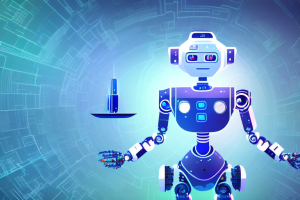With the rapid advancement of technology in our environment Artificial intelligence (AI) as well as robotics are gaining prominence. The potential of AI robots is to revolutionize different industries and human interactions Artificial intelligence robots are attracting interest and admiration. Sophia, the humanoid robot designed by Hanson Robotics, has captured the world’s attention, becoming one of the AI robots that has caught the eye of the world at large. The strikingly human-like look of Sophia and innovative capabilities, Sophia has been making an impact in the field of robotics and AI. Explore the intriguing realm of Sophia and learn about the positive effects she has for society and ethical issues concerning AI robots similar to Sophia.

Discover the fascinating world of AI robot Sophia, a human-like character AI that is revolutionizing the way we interact with technology.
Understanding AI and Robotics
Before you can dive into the story of Sophia It is essential to comprehend the basic concepts regarding AI or robotics. Artificial Intelligence is the development of machines which can perform the duties that typically call for human skill. It includes learning, problem solving about planning and sensing and responding to human feelings. On the contrary side, the focus of robotics lies in developing and designing machines that actively interact with their surroundings and accomplish specific tasks.
Artificial intelligence has advanced a great step since the time it first came into. At first, AI was limited to doing basic calculations or tasks. However, due to advancements in technology and the access to huge quantities of information AI has evolved into extremely complicated and sophisticated animal. From machine learning and natural language processing AI can now be capable of completing complex tasks, and even mimicking human thinking process.
A single of the crucial milestones in the growth of AI was the development the deep learning algorithms. They employ algorithms that utilize influence the design and functions of the brain. This allows machines to learn from huge databases and increase their efficiency over time. The advancement of deep learning has revolutionized several areas of study, including recognition of speech and images and understanding of languages and autonomous driving.
In addition, AI has also made significant progress in the field that of robots. Robots now are equipped with advanced sensors that let them sense and communicate with their environment. They’re able to maneuver through complex areas, move objects in precisely and collaborate with human beings in tasks which require both cognitive and physical capabilities.
Robotics
Robotics have transformed a variety of sectors, from the manufacturing sector to health care. In the manufacturing sector robots have replaced human workers performing repetitive, dangerous work which has led to greater effectiveness and productivity. They are able to complete jobs efficiently and accurately which reduces errors while improving the overall quality. For healthcare, robotics are utilized for surgeries, rehabilitation and even patient medical care. Robots can aid surgeons by providing exact movements, give treatments to patients, and monitor vital sign.
Furthermore it is the way in which integration of AI as well as robotics has helped pave an avenue for the development of humanoid robotics such as Sophia. They are made to look like humans, both by appearance and behaviour which creates a sense familiarity, and facilitates interaction. Sophia can, for example, is able to engage in conversation or express feelings via facial expressions, and adjust her response depending on the environment. The advancements in robotics have opened up new possibilities for cooperation between human beings and machines, with the possibility of revolutionizing many different industries, like education, customer services, and entertainment.
The Evolution of Artificial Intelligence
Artificial Intelligence has experienced exponential growth since first entering our lives. Where initially it limited itself to simple computations and operations, thanks to technological progress and access to vast amounts of information it has rapidly advanced into complex technologies capable of machine learning and natural language processing – effectively replicating human brain functions!
Deep learning algorithms represent one of the great advances in AI. Deep-learning allows machines to extract lessons from vast databases as they improve themselves over time; its impact has been felt widely ranging from speech recognition, image analysis, understanding, functioning autonomously as well as operating autonomously.
AI has also made immense advances in robotics. Modern robots use sophisticated sensors to understand their environment; they can navigate complex terrain using precise manipulation tasks; working alongside humans on projects requiring both physical and cognitive abilities – something AI was previously incapable of.
Artificial Intelligence (AI) and robotics technologies continue to progress at an incredible rate, from autonomous cars that safely navigate traffic, to virtual assistants which understand human commands – these innovations have had an unprecedented effect on daily life, industries across many fields, as well as individual lives themselves.
The Role of Robotics in Today’s World
Robotics have transformed many industries from healthcare to manufacturing. Robots perform jobs that can be dangerous or boring for human beings, increasing productivity and effectiveness. Thanks to advances in technology and sensors, robots can move around as well as interact with objects as well as collaborate with human. Integration of AI and robotics has opened an avenue for the development of humanoid robotics such as Sophia that bridge the gap between humans and machines.
Within the manufacturing sector robotics has revolutionized manufacturing processes by automatizing routine tasks. They are able to assemble items in a consistent and precise manner decreasing errors, and boosting production. This improves productivity but also assures better standard of quality. In addition, robots may operate in dangerous environments like handling hazardous chemicals or working in extremely hot temperatures. They also keep humans safe.
Robotics in HealthCare
Robots for healthcare play an important role in aiding doctors and improving the level of medical care provided to the patients. Robots for surgeries, for instance, let surgeons perform less invasive procedures with greater effectiveness and precision. The result is less cuts as well as less pain, and a faster healing duration of those who undergo the procedure. Robots can also be utilized as rehabilitation tools to aid patients return to being able to function and move after surgical procedures or injuries.
A different area where robots are making a huge impact is in the field of agricultural. Robots for farming can perform tasks like the irrigation of plants, as well as harvesting crops with speed and the accuracy. They are additionally able to check the health of crops, detect insect and disease outbreaks and apply the appropriate methods to decrease the need of pesticides and increase the production of crop. Automating the labour-intensive processes, robots change farming techniques and are contributing in a more sustainable agriculture system.

The Birth of Sophia: A Revolutionary AI Robot
Sophia represented an unparalleled achievement for artificial intelligence (AI) and robotics. Conceived and created by Dr. David Hanson of Hanson Robotics, Sophia served to demonstrate AI’s potential in creating lifelike robots inspired by iconic personalities like Audrey Hepburn. Sophia mimics human facial features and expressions for an exceptionally realistic appearance that was once again created using cutting-edge AI techniques.
The Concept and Creation of Sophia
Sophia’s creation involved an intensive team effort between engineers, scientists, and artists aimed at creating an AI robot capable of emotional intelligence and natural interactions. By using computer vision processing algorithms as well as natural language processing algorithms combined with machine learning algorithms to process information efficiently based on facial recognition technology and machine learning algorithms incorporated within her programming, Sophia could process information quickly while being programmed to recognize faces quickly while responding appropriately to conversations or requests for answers from her environment.
The Technology Behind Sophia’s Human-Like Features
Underneath Sophia’s lifelike exterior lies an array of cutting-edge technologies. Cameras detect her surroundings, microphones process audio files and she utilizes sensors that enable her to engage in conversations or respond to stimuli. Furthermore, Sophia features facial skin-mimicking material patented for human faces which permits natural expressions – giving Sophia an astoundingly human presence.
Sophia’s Capabilities and Interactions
What makes Sophia out is her mental and emotional intelligence. It permits her to communicate with other humans in a real style. She is able to have conversation that is meaningful, reply to queries, and show an array of emotions with their facial expressions as well as body speech.
Sophia’s Cognitive and Emotional Intelligence
Sophia’s AI programming allows her to recognize context, interpret words, and then respond. Sophia is able to analyze the data, and offer insightful responses and also learn from her interactions and enhance her abilities as time passes. In addition, Sophia’s emotional ability allows her to detect and show a range of emotions. It also allows her to have the most natural and compassionate human interaction.
Real-Life Examples of Sophia’s Interactions
Sophia has demonstrated its abilities through several public appearances and interviews where she interacted with individuals from diverse walks of life – engaging casual conversations all the way up to complex discussions with individuals from varying backgrounds. Sophia showed its capacity for appropriate responses while building meaningful connections among herself and those around her – all while showing advances in AI technology as well as its role working alongside humans.
The Impact of AI Robot Sophia on Society and Future Implications
Sophia has made an invaluable contribution to society’s understanding of artificial intelligence (AI) and robotics, expanding our perceptions about what’s possible while sparking discussions on its relevance in daily lives.
Sophia’s Influence on the Perception of AI and Robotics
Sophia has inspired many to question the lines between humans and machines, particularly its artificially intelligent software (AI). Some view Sophia as an astonishing technological feat while others worry about creating such advanced AI robots. Sophia has provoked discussions regarding ethics, responsibility, and potential consequences when developing highly intelligent machines like hers.
Potential Future Developments in AI Robotics
Sophia has set the path for future advancements with AI robotics. Engineers and researchers alike continue the search for robotics similar to Sophia which seamlessly integrate in with society, while positively affecting sectors ranging from healthcare assistance as well as companionship for elderly people and enhancing the daily routine in innovative and exciting ways.
Ethical Considerations Surrounding for AI Robot Sophia
When AI robots such as Sophia are becoming more sophisticated they are also presenting ethical questions and must be dealt with in order to ensure their proper acceptance into the society.
The Debate on AI Rights and Responsibilities
As robots develop human-like abilities There are many questions regarding their legal rights and responsibilities. Many argue that AI robotics ought to be considered with the same dignity and rights as human beings in contrast to others who claim they’re machines without human moral consciousness or obligations. The balance to strike between the positives of AI robotics and ethical concerns that accompany their advancement is an ongoing challenge.
Privacy and Security Concerns with AI Robot Sophia
As AI-powered robots become more and more interconnected to human beings such that privacy concerns as well as security are being asked. As robots can process personal information and learn of their own experiences, safeguarding private information and moral use of AI is vital. The balance between the benefits of AI robots as well as the security of privacy-sensitive data is a constant concern for individuals as well as the decision makers of companies, policy makers as well as organizations.
For a conclusion, AI robot Sophia represents an important leap forward in the world of AI as well as robots. Her human-like appearance as well as her advanced capabilities Sophia challenges our beliefs and sparks debate about the future implications and ethical ramifications for AI robotics. With technology constantly improving and advancing and advance, it is crucial to think about the use of AI robots, such as Sophia responsibly and take into account their potential positive effects and the challenges they could cause. Only by an in-depth analysis, and constant discussion is it possible to be certain that technology will benefit human beings in a beneficial and efficient manner.



